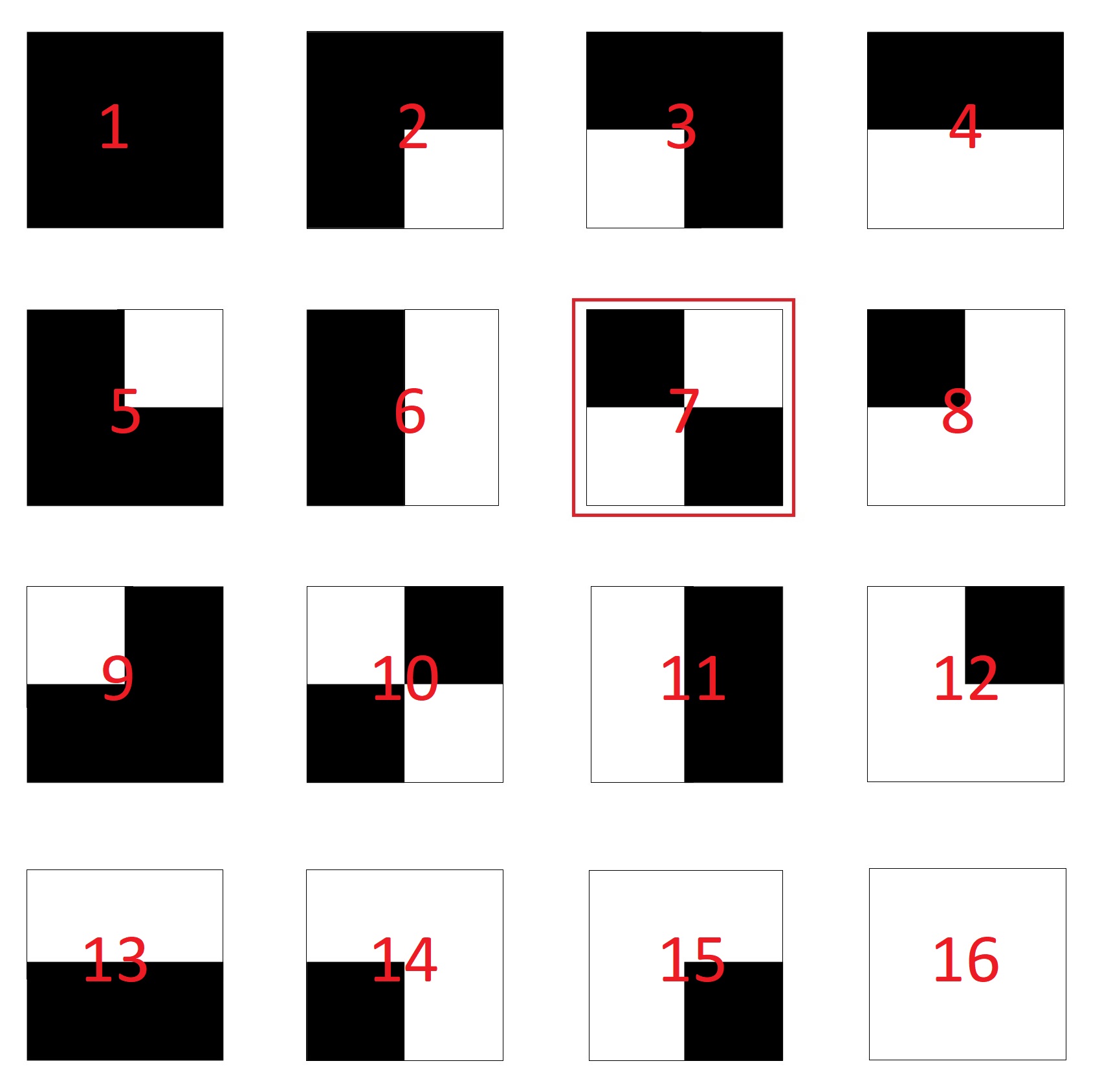What is ImageVoid?
ImageVoid is an image encoder and viewer. It enables images to encrypted and shared. Nothing special about that, right? Well, ImageVoid is special. It doesn't store image files, it doesn't produce image files, and it doesn't transmit image files. There is no image data whatsoever contained within the ImageVoid system.
How is this possible?
Consider a 2x2 grid where each pixel can be either black or white. The total number of possible configurations for this grid is 16 (pictured). Each possible configuration is assigned a number in the sequence of possibilites (i.e. 1-16). If ImageVoid were configured to process such a 2x2 black and white grid, and you submitted the image shown in the red box for encoding, the output (stored in an encrypted file) would be "7". Submitting this output file to ImageVoid for decoding would render the the 7th possible configuration on screen. This is how ImageVoid works. It determines where an encoded image resides within a sequence of all screen configurations and records this number in a file that allows the process to be reversed. Image data isn't stored - only numbers. How many possible screen configurations does ImageView currently support? Approximately 10^230000. That is number so large that even the total number of atoms in the universe is small by comparison.

Features:
Built:
- Encode with decoy image – encoded file is both a viewable .jpg file (user defined) and a file that can be decoded by ImageVoid to render the original.
- Poison Pill – ImageVoid files become permanently unreadable ("Lost to the Void") after x failed password attempts.
Pending funding:
- Higher spec servers and load-balancers
- Increase in supported file size and image resolution
- Independent security testing and improvements
- Frontend and UX development
How Secure is ImageVoid?
ImageVoid files are AES256 encrypted with over 650 bits of entropy. It is computationally impossible to decode an ImageVoid file without both the user-defined password and the ImageVoid key. No one (including ImageVoid admins) can associate an ImageVoid file with a person, determine who encoded it, or decode (i.e. view) it. No user information is gathered or recorded as part of encoding or decoding, no passwords are saved on the server, no metadata is stored, no logs of any kind are kept (ever), and no image data is saved anywhere, at any time. ImageVoid maintains a catalogue of numbers only.